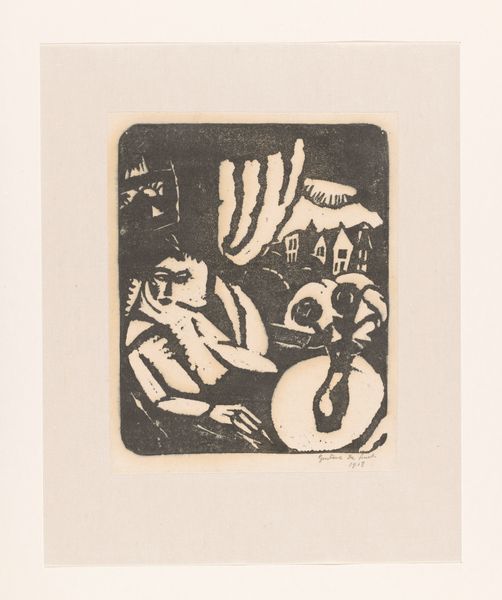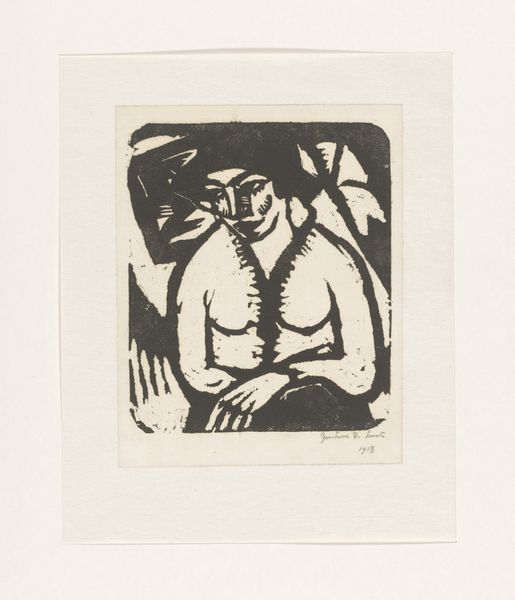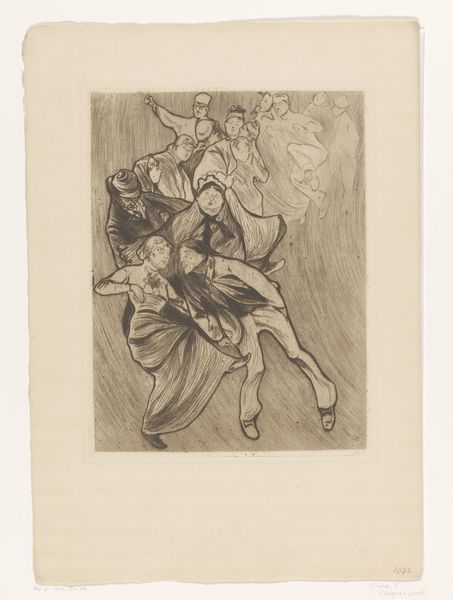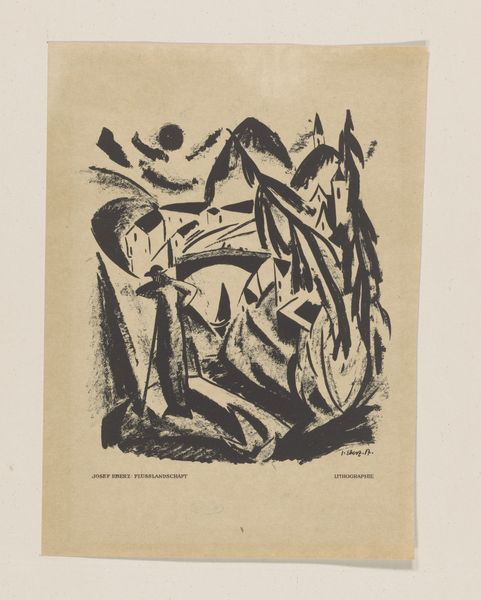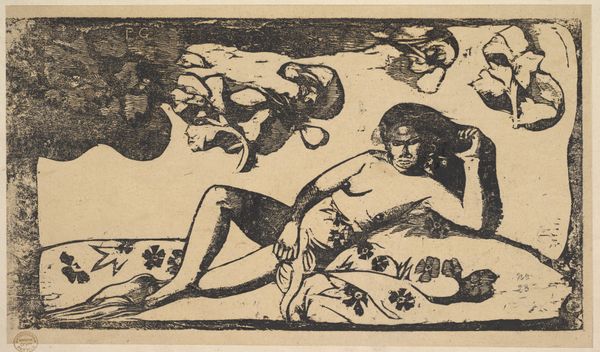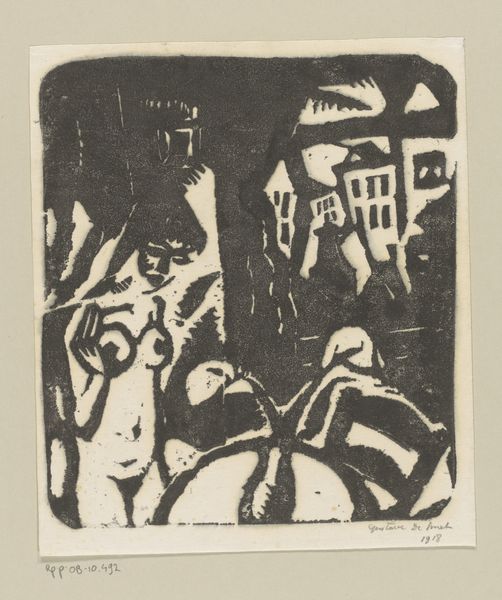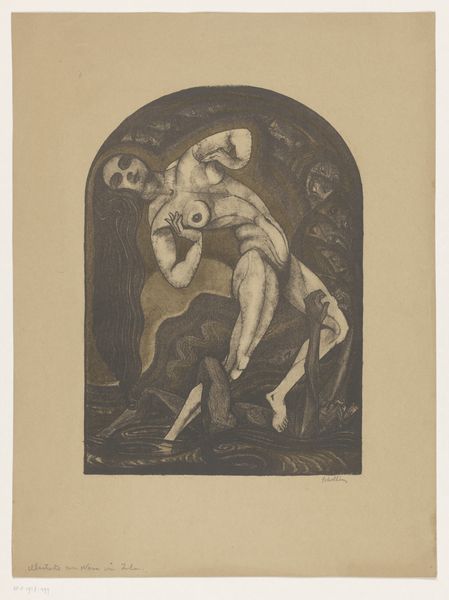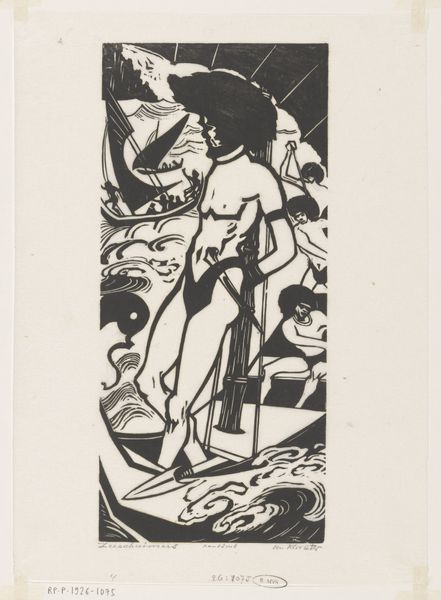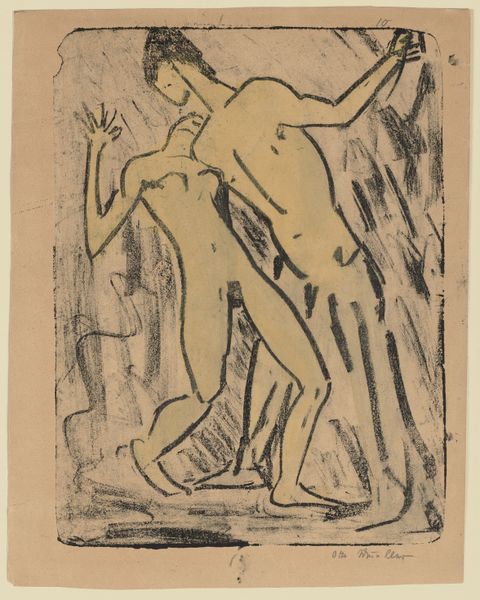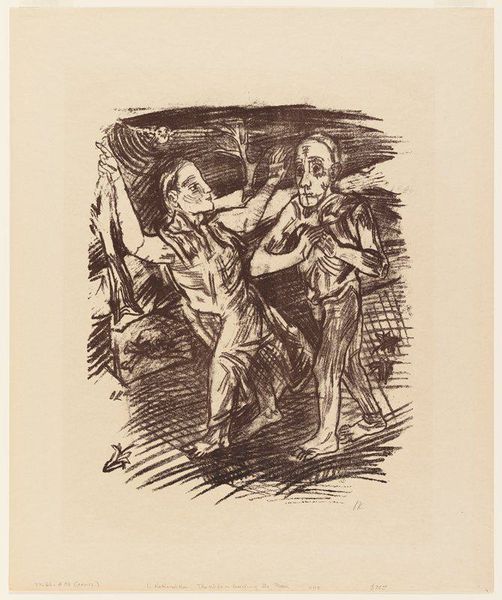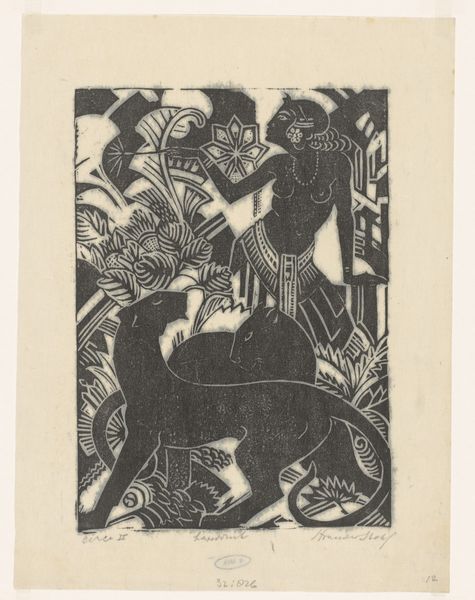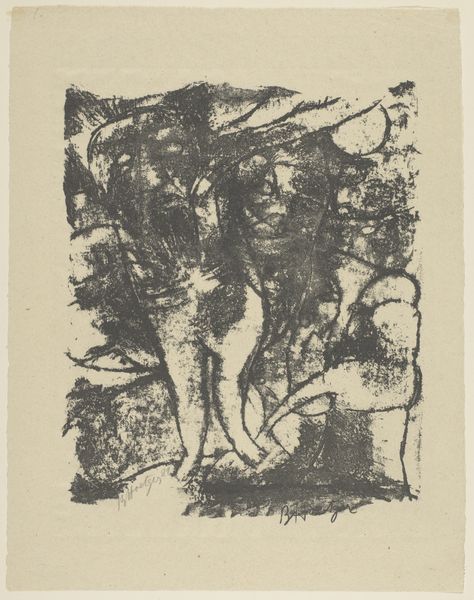
print, relief-print, woodcut
# print
#
relief-print
#
dog
#
landscape
#
figuration
#
linocut print
#
woodcut
Dimensions: height 154 mm, width 109 mm
Copyright: Rijks Museum: Open Domain
Curator: Editor: This relief-print, "Kind met bloemen en hond," is attributed to Ad. Hoffmann and thought to have been made sometime between 1900 and 1947. The image is pretty simple—a child with flowers and a dog. I am curious, how would you interpret this piece? Curator: It's tempting to see it as an innocent depiction of childhood, but I wonder if we can dig a little deeper, especially given the historical context. The early 20th century saw significant shifts in understanding childhood, and artistic depictions often reflected societal anxieties and ideologies. Editor: What kind of anxieties are we talking about? Curator: Well, think about the rise of modernism and the challenges to traditional social structures. Representations of children were sometimes used to explore themes of innocence, vulnerability, and even the future of society. The simplification of form in this print—the almost blocky figures—might reflect the influence of Expressionism and its focus on raw emotion. The child also has classical robes, similar to depictions of Cupid. Editor: Ah, I see! And the dog? Curator: The dog, of course, is interesting. Throughout art history, dogs can represent loyalty and fidelity, but also servitude or the 'domesticated' natural world. Here, it seems the dog is another offering alongside the flowers. What does this make you think about regarding the depiction of nature and childhood in the early 20th century? Editor: Hmmm, the image suggests a simplified life that’s very different from the complicated times in which it was made! Thank you, I’ll never look at what appears simple art again without wondering about the story beneath the surface! Curator: Exactly! The best art often holds a mirror to society and the culture that bore it, offering multiple levels of engagement, inviting us to learn.
Comments
No comments
Be the first to comment and join the conversation on the ultimate creative platform.

